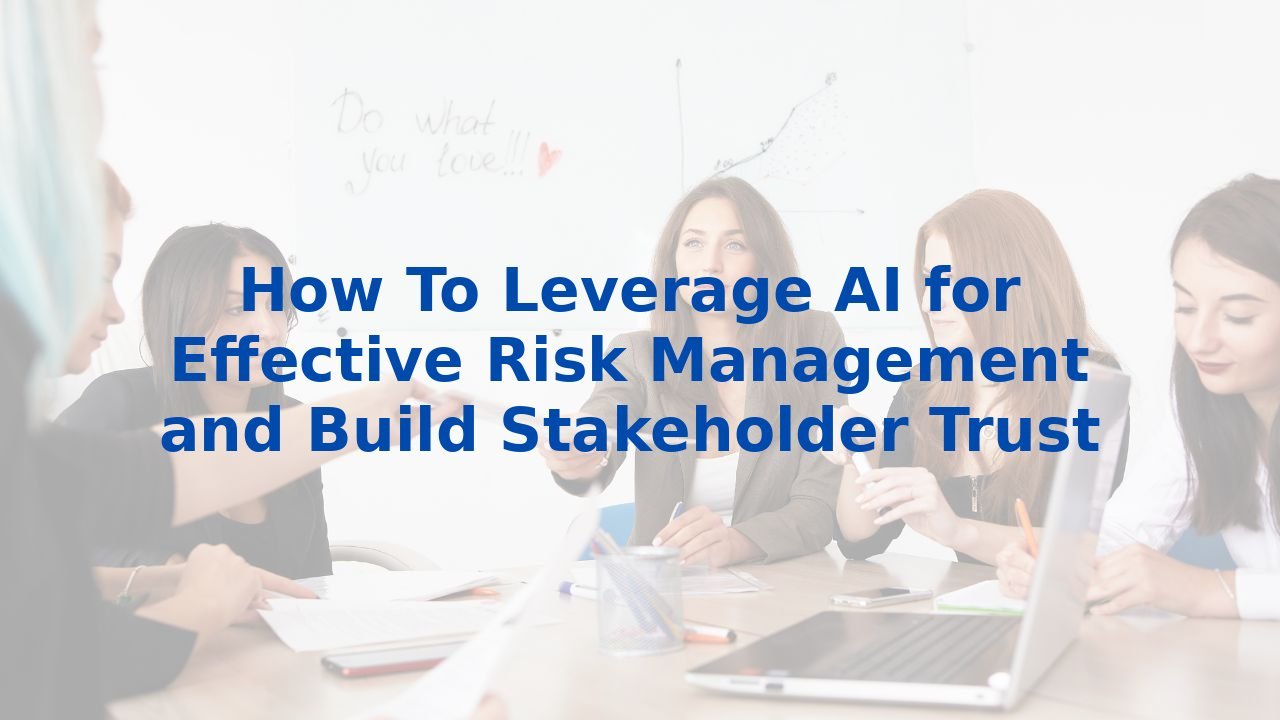How To Leverage AI for Effective Risk Management and Build Stakeholder Trust
The Trust Equation: Managing Risk Events with AI
In the world of business, trust is akin to the foundation of a sturdy building. However, what happens when the ground beneath that trust is shaken by risk events? Effective risk management is not just essential; it’s a pivotal part of maintaining stakeholder trust. If you think about it, in an impeccable environment devoid of risk events, trust would be superfluous. Yet, in reality, risk is abundant, and mastering its management can set your organization apart from the competition.
Understanding Risk Events
Risk events encompass unpredictable disruptions that can impact your organization—financial crises, operational failures, cybersecurity threats, and regulatory compliance issues are just a few examples. Each event carries the potential to challenge your organization’s credibility and re-evaluate your stakeholders' perception of your trustworthiness.
To mitigate these experiences, organizations must adopt robust risk management strategies to safeguard their reputation. Fundaments of this process include identifying the risks, assessing their potential impact, implementing mitigating actions, and monitoring outcomes. Each of these steps benefits tremendously from the capabilities of Artificial Intelligence (AI).
Enhancing Business Processes with AI
1. Risk Identification
AI technologies empower businesses to unearth potential risks through predictive analytics. By analyzing vast amounts of data, AI can detect anomalies and forecast potential issues before they escalate. This allows organizations to proactively identify and assess risks, reducing the likelihood of unanticipated disruptions.
2. Risk Assessment
With AI, evaluating the potential impact of identified risks becomes more accurate and efficient. Machine learning algorithms can analyze historical data and present risk probabilities and impacts with enhanced precision. This not only aids decision-makers but also gives stakeholders confidence in the actions taken to mitigate risks.
3. Implementation of Mitigating Actions
AI facilitates the development and execution of mitigation strategies by streamlining business processes. By automating repetitive tasks and enabling data-driven decisions, organizations can allocate resources where they are needed the most, ensuring that risk mitigation is both cost-effective and timely.
4. Continuous Monitoring
AI doesn't stop at risk mitigation; it also plays a crucial role in ongoing monitoring. By integrating AI technologies, organizations can establish real-time surveillance of risk factors, ensuring quick responses to emerging threats. This dynamic adjustment ability fosters resilient business operations that can withstand disruptions.
The Transformative Benefits of AI
Implementing AI in your risk management processes opens the door to numerous benefits, each contributing to a more robust business integrity overall. Key advantages include:
- Improved Efficiency: Automation frees up human resources for more strategic engagements while driving productivity up through faster decision-making.
- Cost Reduction: Predictive analytics help avoid risk events altogether, reducing potential financial losses and the costs associated with reactive responses.
- Enhanced Credibility: A sound risk management framework supported by AI reinforces your organization’s commitment to operational excellence, boosting stakeholder trust in turn.
The Importance of AI Training for Employees
To fully realize the potential of AI, your workforce must be equipped with the necessary skills and understanding. Training your employees in AI isn’t just an investment in technology; it’s an investment in your people. As they gain familiarity and proficiency with AI tools, employees can effectively harness their capabilities for risk management, data analysis, and process optimization.
Furthermore, informed employees contribute toward building a culture of innovation and agility. By understanding AI's impact and applications, they become empowered to take initiative in mitigating risks and providing solutions, ultimately fostering resilience within the organization.
Conclusion: Building a Future of Trust
In an era where risk is an inevitable reality, organizations must adopt progressive tools and strategies to bolster trustworthiness. Leveraging AI in risk management not only enhances efficiency but also constructs a fortress of trust that can withstand the storms of risk events. Remember, cultivating trust in your business isn’t just about avoiding risks; it’s about how expertly you manage them when they arise. By marrying risk management with cutting-edge AI, your organization can pave the way for a healthier, more robust future.
For further insights and training opportunities on harnessing AI in your organization, visit Complete AI Training.
#riskevents #trustworthiness #trust #personalgrowthorchange #trustgenie



